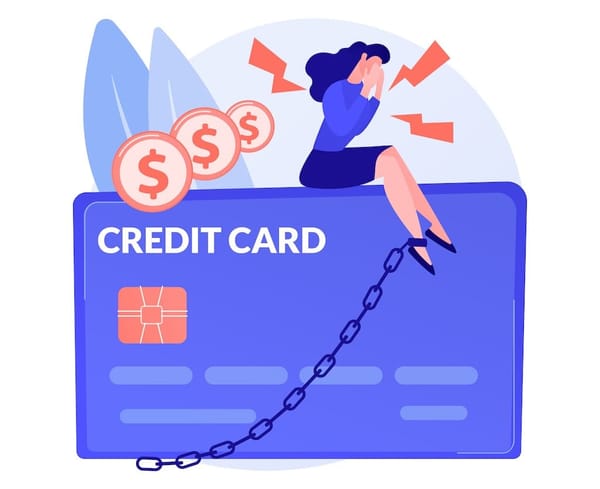No-Spend Challenge Rules & Benefits: Why It’s Worth Trying
Think of the No-Spend Challenge as a detox for your personal finances. Commit to cutting out all non-essential spending for a defined period of time. The goal is to give your money a fresh start and build better financial habits that you can rely on for the longer term.

What is the No-Spend Challenge?
Think of the No-Spend Challenge as a detox for your personal finances. You will commit to cutting out all non-essential spending for a defined period of time such as a few weeks or a few months. The goal is to give your money a fresh start and build better financial habits that you can rely on for the longer term.
Why commit to a No-Spend Challenge?
Increase financial discipline
Build new good habits
When you have a hard time getting spending under control and have perhaps accumulated a lot of extravagant habits over many years. A No-Spend Challenge can be a good way to break bad habits and reset all your habits.
Become intentional in your spending
It is common for people to not easily distinguish between needs and wants. Everything can seem worth spending on – whether it is that latest iPhone model, eating out with friends several times a week, or splurging a bit too much on ‘fast fashion’.
The No-Spend Challenge will force you to distinguish between spending areas that are absolutely necessary as opposed to nice-to-have or discretionary spending. Mindful spending will be a lot easier on your wallet and set you up for long term financial success.
Get used to living more frugally
When you cut down all unnecessary spending, you learn to live a more frugal lifestyle. Even after the challenge is complete, a more frugal lifestyle can become the new normal.
Save for a goal
You can use the No-Spend Challenge to make progress on a longstanding financial goal. For example, you may use the savings from this Challenge to boost your emergency funds, pay down debt, or save for an important long-term goal.
No Spend Challenge Rules: 5 Fundamentals
Rule 1: Define No-Spend Challenge goals
Decide what you want to accomplish with the No-Spend Challenge.
- Do you want to build good habits for the longer term?
- Increase your savings by a certain amount?
- Pay off debt?
Once you are clear about your end goal, decide how long you want to do the challenge for. A week, 1 month? Or even longer? Having a definite timeframe helps you take on a tough challenge knowing that you can accomplish a concrete and hard goal within a certain timeframe.
Rule 2: Assess your needs vs wants
You need to identify the things that are absolute necessities vs discretionary spending or ‘nice-to-have’ spending. It can be helpful to follow the 50/30/20 rule for Needs vs Wants vs Savings.
Cut out all the spending in the ‘Wants’ list and allocate this amount towards your savings. Who knows, this may become your long-term lifestyle, once you build a great savings habit via the challenge.
Rule 3: Track your progress
Set up a budget, preferably a daily budget so that you can make sure you are on track and course correct quickly if needed. As you go through the challenge, track your actual expenses against the budget every day. Allocate a few minutes at the end of each day to track your spending and plan for the following day.
Rule 4: Set up accountability mechanisms
Good intentions are not enough, most people need accountability mechanisms to ensure that they stay on track.
The following are some accountability mechanisms you can put in place to ensure success of your No-pend Challenge.
Do the Challenge with friends or family members. This way you both can keep each other on track and help avoid temptations.
Put extra money out of reach: Calculate how much you need for your needs and put away all additional income as savings. You could auto direct withdrawals into investment accounts or savings accounts. This way, your spending accounts will only have enough to cover your planned budget.
Rule 5: Retrospective after the challenge
It is important to take stock of your performance after the Challenge. Think about what worked for you during the challenge and what did not work. This may be the beginning of some new money habits that will help you in the long term.
Perhaps you figure out that there are spending areas that you can eliminate altogether and you won’t even miss them. On the other hand, you may find that there are a few things that you actually need to spend on, and you add these back to your budget. But the goal is to be intentional about this spending and not do it mindlessly.
FAQs about the No-Spend Challenge
What is the right duration for the No-pend Challenge?
The right challenge length should be based on a few factors:
(1) Help you achieve a tangible financial goal within this time period. You may not be able to save for your entire goal, but making a dent in the goal can be a tremendous psychological boost.
(2) Build a set of good habits: Typically, it takes 21 days to 2 months to build a new habit. So a Challenge that lasts a duration of 1-2 months will let you build some good habits while also giving you enough time to make progress on your savings goals.
What happens if you fall off track?
While we all want to stick to the plan 100%, it is quite possible to spend money on something that is not part of the challenge. Should this happen, do not fret about the lapse; just get back on track right away. Even with some lapses, you can get to a much better place in terms of your finances if you stick with the plan.
What if there is an emergency while I do the Challenge?
Set aside money for an emergency fund. This is a good practice in general, regardless of the challenge. It is wise to have at least 3-6 months’ emergency fund. If you have not saved this amount, you can use the money saved from the challenge to seed your emergency fund.
Conclusion
The No-Spend Challenge can be a great way to get your financial situation back on track and build some solid money habits. Make sure to follow the 5 rules:
- Define your goals
- Assess your needs vs wants
- Track progress
- Set up accountability mechanisms
- Retrospective
Planwell as an AI Financial Advisor and Planning App
We are building Planwell, a fully automated AI financial advisor and planner to help people make financial decisions that are super personalized to their goals and financial situation. Planwell uses its own financial models to ensure accuracy under many different scenarios. The data visualizations are intuitive and easy to understand and take action.
We will be launching the product very soon. Stay tuned for an update. In the meantime, check out our blog posts to help you plan your finances.
- How to recession-proof your FIRE strategy: Make sure you are on track with your FIRE strategy, even in a tough economy.
- 5 surprising (and scary) financial facts: Learn about common financial mistakes Americans tend to do and make sure to avoid these.
- The Boglehead investment approach: Learn about the Bogleheads’ definitive approach to personal finance and investing.
- How to Use AI Budget Calculators and Tools to Plan Your Finances: Take advantage of our free FIRE calculator to plan your finances more effectively.
- Backdoor Roth IRA Process: Learn more about the backdoor Roth IRA process.
- 5 Overlooked Workplace Benefits: Lesser known workplace benefits that can be super useful and help save a lot of money.
- How to build a personal financial plan: Build your personalized financial plan with our 10 step guide.
5 Common Money Mistakes to Avoid: Learn about the pitfalls that could derail your early retirement plans.



